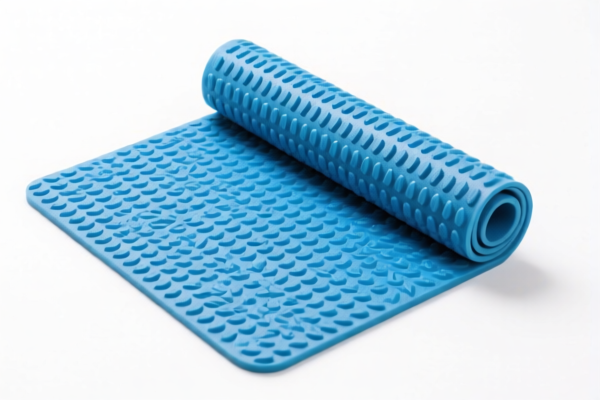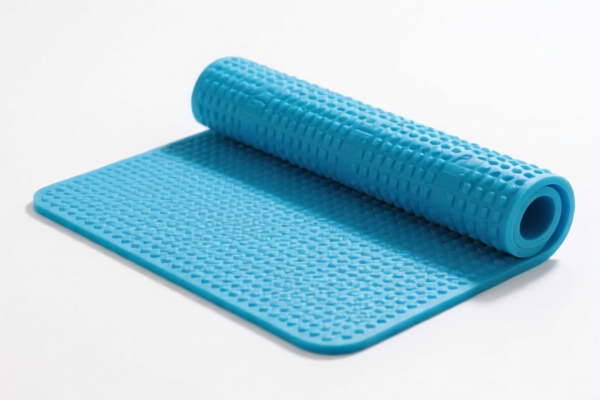| HS Code | Official Doc | Tariff Rate | Origin | Destination | Effective Date |
|---|---|---|---|---|---|
| 4016910000 | Doc | 57.7% | CN | US | 2025-05-12 |
| 4008210000 | Doc | 55.0% | CN | US | 2025-05-12 |
| 4008294000 | Doc | 57.9% | CN | US | 2025-05-12 |
| 3918102000 | Doc | 60.3% | CN | US | 2025-05-12 |
| 3918901000 | Doc | 60.3% | CN | US | 2025-05-12 |
| 3926901000 | Doc | 40.9% | CN | US | 2025-05-12 |
| 3926909905 | Doc | 42.8% | CN | US | 2025-05-12 |
| 4823908000 | Doc | 55.0% | CN | US | 2025-05-12 |
| 4819504060 | Doc | 55.0% | CN | US | 2025-05-12 |
| 5705002090 | Doc | 58.3% | CN | US | 2025-05-12 |
| 5705001000 | Doc | 55.0% | CN | US | 2025-05-12 |
| 5701902090 | Doc | 30.0% | CN | US | 2025-05-12 |
| 5701901090 | Doc | 55.0% | CN | US | 2025-05-12 |




Base Nonslip Mat
A base nonslip mat is a foundational component used in a variety of applications to provide stability and prevent slippage. These mats are typically employed as underlays for larger items, flooring, or within specific setups requiring secure footing.
Material
Base nonslip mats are constructed from a range of materials, each offering different properties:
- Rubber: Commonly used due to its inherent grip, durability, and resistance to wear and tear. Natural rubber and synthetic rubber (like neoprene or SBR) are both prevalent.
- PVC (Polyvinyl Chloride): A cost-effective option, PVC mats offer good grip and water resistance, but may be less durable than rubber.
- Foam: Often used for lighter-duty applications, foam mats provide cushioning and some degree of slip resistance. Variations include polyethylene foam and polyurethane foam.
- Cork: A natural and sustainable option, cork mats offer good grip and cushioning, commonly used in yoga or craft applications.
- Fabric (with Rubber Backing): These combine the aesthetic appeal of fabric with the functionality of a rubber non-slip backing.
Purpose
The primary purpose of a base nonslip mat is to:
- Prevent Slippage: Secure items in place, reducing the risk of accidents or movement.
- Protect Surfaces: Guard underlying floors or surfaces from scratches, dents, and other damage.
- Reduce Noise: Some mats offer sound dampening properties.
- Provide Cushioning: Offer a more comfortable standing surface or protect fragile items.
Function
The function relies on the creation of friction between the mat, the underlying surface, and the item placed on top. This is achieved through:
- Textured Surface: Mats often feature raised patterns, ridges, or a specialized grip pattern to increase friction.
- Adhesive Properties: Some mats utilize a light adhesive layer to temporarily secure items.
- Weight Distribution: The mat helps distribute the weight of the item, increasing contact and friction.
Usage Scenarios
- Area Rugs: Placed under area rugs to prevent them from sliding on hardwood, tile, or laminate floors.
- Furniture: Used under furniture legs to protect floors and prevent scratching.
- Yoga/Exercise: Provide a stable, non-slip surface for yoga, Pilates, or other floor exercises.
- Crafting: Used as a work surface for cutting, painting, or assembling crafts.
- Industrial Applications: Used in factories or workshops to provide a safe working environment.
- Pet Feeding: Placed under pet bowls to prevent food and water spills from sliding.
- Car Interiors: Used to secure floor mats or other items within vehicles.
Common Types
- Universal Rug Pads: General-purpose mats for area rugs.
- Furniture Pads: Smaller pads specifically designed for furniture legs.
- Yoga Mats: Specialized mats with textured surfaces for yoga practice.
- Exercise Mats: Thicker mats for high-impact exercises.
- Interlocking Foam Tiles: Modular tiles that can be configured to create a larger non-slip surface.
- Non-Adhesive Shelf Liners: Used to prevent items from sliding on shelves.
- Car Floor Mats: Designed to fit specific vehicle models.
- Door Mats: Heavy-duty mats to trap dirt and debris while providing a non-slip base.
Based on the provided information, the following HS codes may be relevant to “base nonslip mat”:
-
4016910000: This HS code covers “Other articles of vulcanized rubber other than hard rubber: Other: Floor coverings and mats”. This is a broad category encompassing floor coverings and mats made from vulcanized rubber (excluding hard rubber).
- 40: Chapter 40 – Rubber and articles thereof.
- 16: Heading 4016 – Other articles of vulcanized rubber other than hard rubber.
- 91: Subheading 401691 – Other.
- 00: Further specification – Floor coverings and mats.
-
3918102000: This HS code covers “Floor coverings of plastics, whether or not self-adhesive, in rolls or in the form of tiles; wall or ceiling coverings of plastics, as defined in note 9 to this chapter: Of polymers of vinyl chloride: Floor coverings: Other”. If the mat is made of polymers of vinyl chloride, this code applies.
- 39: Chapter 39 – Plastics and articles thereof.
- 18: Heading 3918 – Floor coverings of plastics.
- 10: Subheading 391810 – Of polymers of vinyl chloride.
- 20: Further specification – Floor coverings: Other.
-
3918901000: This HS code covers “Floor coverings of plastics, whether or not self-adhesive, in rolls or in the form of tiles; wall or ceiling coverings of plastics, as defined in note 9 to this chapter: Of other plastics: Floor coverings”. If the mat is made of plastics other than polymers of vinyl chloride, this code applies.
- 39: Chapter 39 – Plastics and articles thereof.
- 18: Heading 3918 – Floor coverings of plastics.
- 90: Subheading 391890 – Of other plastics.
- 10: Further specification – Floor coverings.
-
5705002090: This HS code covers “Other carpets and other textile floor coverings, whether or not made up: Other Other”. If the mat is a textile floor covering, this code may be applicable.
- 57: Chapter 57 – Carpets and other textile floor coverings.
- 05: Heading 5705 – Other carpets and other textile floor coverings.
- 00: Subheading 570500 – Other.
- 20: Further specification – Other.
- 90: Further specification – Other.
Regarding these HS codes, it is important to verify the material composition of the mat to determine the correct classification. If the mat is made of rubber, 4016910000 is the most likely option. If it is made of plastic, either 3918102000 or 3918901000 may apply, depending on the type of plastic. If it is a textile floor covering, 5705002090 should be considered.
Customer Reviews
No reviews yet.